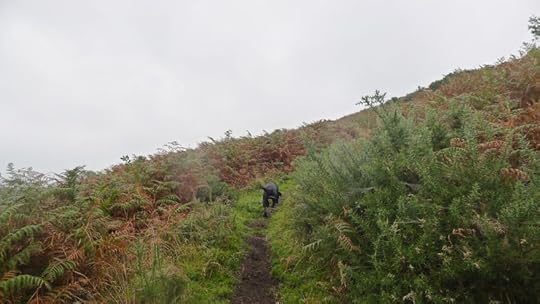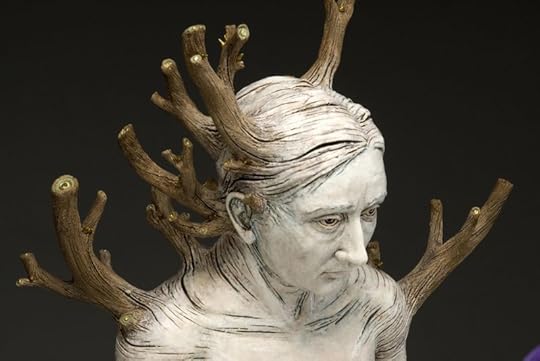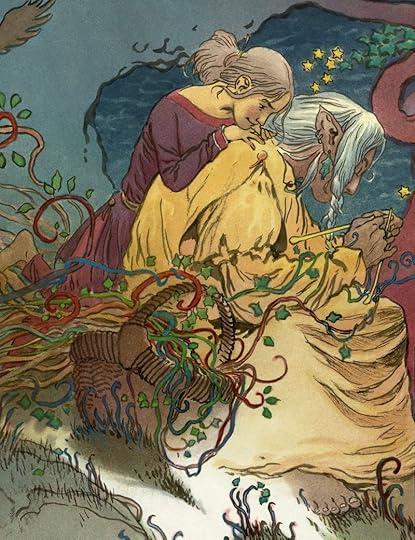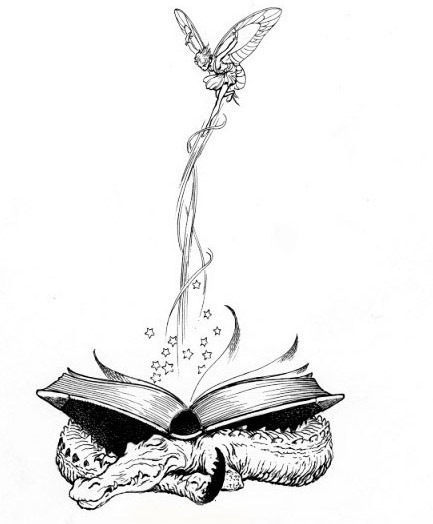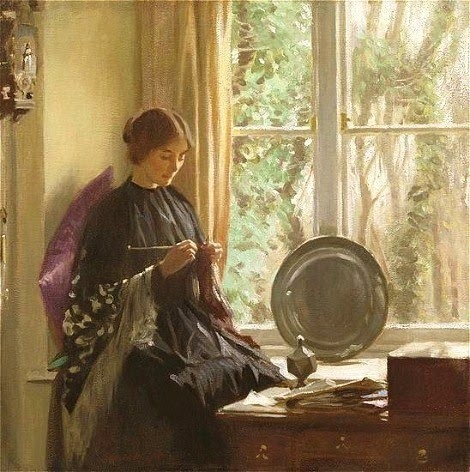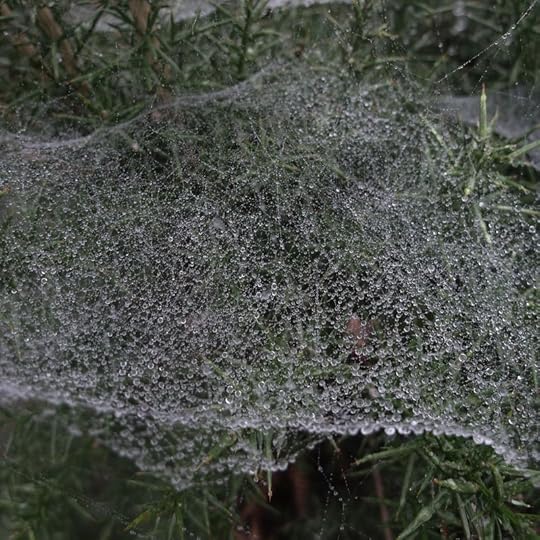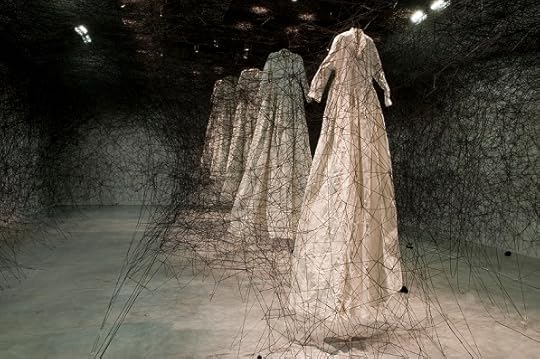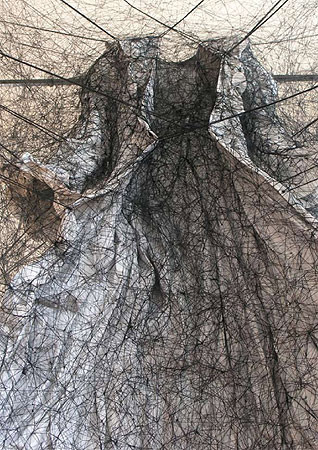Terri Windling's Blog, page 177
October 28, 2013
Climbing the hill: reflections on persistence
"Writing is difficult. You do it all alone without encouragement and
without any certainty that you'll ever be published or paid or even that
you'll be able to finish the particular work you've begun. It isn't
easy to persist amid all that. Sometimes when I'm interviewed, the
interviewer either compliments me on my 'talent,' my 'gift,' or asks me
how I discovered it. I used to struggle to answer this politely,
to explain that I didn't believe much in writing talent. People who want
to write either do it or they don't. At last I began to say that my
most important talent -- or habit -- was persistence. Without it, I would
have given up writing long before I finished my first novel. It's
amazing what we can do if we simply refuse to give up." - Octavia E. Butler
"Of course you must perservere. Your first 10,000 photographs are your worst." - Henri Cartier-Bresson
"The rewrites are a struggle right now. Sometimes I wish writing a book
could just be easy for me at last. But when I think about it
practically, I am glad it's a struggle. I am (as usual) attempting to
write a book that's too hard for me. I'm telling a story I'm not smart
enough to tell. The risk of failure is huge. But I prefer it this way.
I'm forced to learn, forced to smarten myself up, forced to wrestle. And
if it works, then I'll have written something that is better than I
am." - Shannon Hale
"What is it about writing that makes it -- for some of us -- as necessary as
breathing? It is in the thousands of days of trying, failing, sitting,
thinking, resisting, dreaming, raveling, unraveling that we are at our
most engaged, alert, and alive. Time slips away. The body becomes
irrelevant. We are as close to consciousness itself as we will ever be.
This begins in the darkness. Beneath the frozen ground, buried deep
below anything we can see, something may be taking root. Stay there, if
you can. Don’t resist. Don’t force it, but don’t run away. Endure. Be
patient. The rewards cannot be measured. Not now. But whatever happens,
any writer will tell you: This is the best part." - Dani Shapiro (Still Writing: The Pleasures and Perils of the Creative Life)
"We are made to persist. That's how we find out who we are." - Tobias Wolff
October 27, 2013
Tunes for a Monday Morning
Today, extremely beautiful music from the Greek composer Eleni Karaindrou, performed by the Camerata Orchestra in Athens in 2005.
Above:"Eternity and a Day."
Below: "Decision" and "The Weeping Meadow."
October 26, 2013
"It's been my experience that you can nearly always enj...
"It's been my experience that you can nearly always enjoy things if you make up your mind firmly that you will. " - L.M. Montgomery (Anne of Green Gables)
October 24, 2013
On friendship
"Friendship has never seemed both more important and less relevant than
it does now," wrote Jessica Vivian Chiu for a beautiful essay on friendship for the Paris Review. "The concept surfaces primarily when we worry over whether
our networked lives impair the quality of our connections, our
community. On a nontheoretical level, adult friendship is its own
puzzle. The friendships we have as adults are the intentional kind, if
only because time is short. During this period, I began to consider the
subject. What is essential in friendship? Why do we tolerate difference
and distance? What is the appropriate amount to give?"
She then goes on to explore the friendship between writers Sherwood Anderson, Theodore Dreiser, and the sculptor Wharton Esherick. You can read the full essay here.
Considering how important friendships have been in my own life and in the lives around me, I find it baffling that the joys, sorrows, and complexities of friendship (and for me personally, women's friendships) have not been a central theme in literary and other arts. Yes, the ocassional book or film (and, rarer still, painting or song)...but the numbers are small compared to works dedicated to romance, family dynamics, and personal journeys in which friendships are fleeting or relegated to second tier roles.
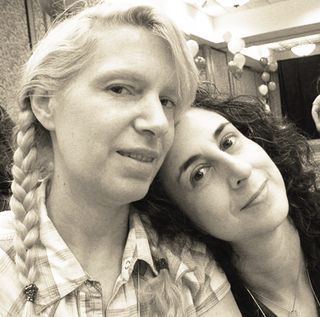 Yet for many of us, our friends are family; and often in our young adulthood it's friendship that lasts while romances come and go. Meeting someone with the potential to become a close friend can feel almost as giddy as falling in love; and certainly the end of a friendship can be just as painful as divorce. Sometimes worse.
Yet for many of us, our friends are family; and often in our young adulthood it's friendship that lasts while romances come and go. Meeting someone with the potential to become a close friend can feel almost as giddy as falling in love; and certainly the end of a friendship can be just as painful as divorce. Sometimes worse.
I'd like your help today in recommending works of art (in all fields) on the subject of friendship. For example, my favorite novel to date on the subject of friendship is Elizabeth Wein's brilliant Code Name Verity, a gorgeously written and harrowing story about the friendship between two young female pilots in World War II. To me, this book captures the absolutely intensity of the bond between best friends. My favorite memoir on the the subject is Testament of Friendship by Vera Brittain (author of the better-known World War I era memoir Testament of Youth). This beautiful book is about Brittain's deep relationship with fellow writer, feminist, and politcal activist Winifred Holtby...though close runners-up would be A World of Light by May Sarton,
a fascinating book in which the author looks at the friendships that
formed her world from her mid-twenties to her mid-forties; and Truth and Beauty by Ann Patchett, about her complicated, rather difficult friendship with fellow writer Lucy Grealy.
My favorite biographical work about friendship is The Red Rose Girls by Alice Carter, about the artists Jessie Willcox Smith, Elizabeth Shippen Green and Violet Oakley.
And you? What do you recommend on the theme of "friendship," in any form of art?

 Images above: My old friend Ellen Kushner and me back in the 1980s (photographed by Beth Gwinn); Ellen and me in 2006 (photographed by Nina Kiriki Hoffman); and Ellen, Tilly & me during Ellen's visit to Chagford (with Delia Sherman and Kathleen Jennings) this week (first photo by me, the second photo by Ellen).
Images above: My old friend Ellen Kushner and me back in the 1980s (photographed by Beth Gwinn); Ellen and me in 2006 (photographed by Nina Kiriki Hoffman); and Ellen, Tilly & me during Ellen's visit to Chagford (with Delia Sherman and Kathleen Jennings) this week (first photo by me, the second photo by Ellen).
October 23, 2013
Feeding the lake
"When I write something I usually think it
is very important and that I am a very fine writer. I think this happens
to everyone. But there is one corner of my mind in which I know very
well what I am, which is a small, a very small writer. I swear I know
it. But that doesn't matter much to me. Only, I don't want to think
about names: I can see that if I am asked 'a small writer like who?' it
would sadden me to think of the names of other small writers. I prefer
to think that no one has ever been like me, however small, however much a
mosquito or a flea of a writer I may be. The important thing is to be
convinced that this really is your vocation, your profession, something
you will do all your life." - Natalia Ginzburg (The Little Virtues)
“If the work comes to the artist and says, 'Here I am, serve me,' then the job of the artist, great or small, is to serve. The amount of the artist's talent is not what it is about. Jean Rhys said to an interviewer in the Paris Review, 'Listen to me. All of writing is a huge lake. There are great rivers that feed the lake, like Tolstoy and Dostoyevsky. And there are mere trickles, like Jean Rhys. All that matters is feeding the lake. I don't matter. The lake matters. You must keep feeding the lake.' " - Madeleine L'Engle (Walking on Water: Reflections on Faith and Art)
October 22, 2013
Daydreams and Spells
The passage below is from "Why our future depends on libraries, reading, and daydreaming," a recent lecture by Neil Gaiman in which he argues not only for the value of reading, but also for the value of stories often dismissed as "escapist." (Follow the link to read this excellent piece in full.)
"Fiction can show you a different world," Neil says. "It can take you somewhere you've never been. Once you've visited other worlds, like those who ate fairy fruit, you can never be entirely content with the world that you grew up in. Discontent is a good thing: discontented people can modify and improve their worlds, leave 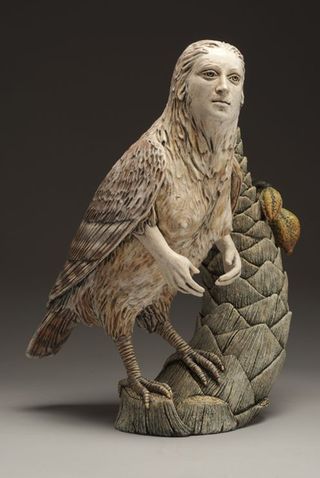 them better, leave them different.
them better, leave them different.
And while we're on the subject, I'd like to say a few words about escapism. I hear the term bandied about as if it's a bad thing. As if 'escapist' fiction is a cheap opiate used by the muddled and the foolish and the deluded, and the only fiction that is worthy, for adults or for children, is mimetic fiction, mirroring the worst of the world the reader finds herself in.
If you were trapped in an impossible situation, in an unpleasant place, with people who meant you ill, and someone offered you a temporary escape, why wouldn't you take it? And escapist fiction is just that: fiction that opens a door, shows the sunlight outside, gives you a place to go where you are in control, are with people you want to be with (and books are real places, make no mistake about that); and more importantly, during your escape, books can also give you knowledge about the world and your predicament, give you weapons, give you armour: real things you can take back into your prison. Skills and knowledge and tools you can use to escape for real.
"As J.R.R. Tolkien reminded us, the only people who inveigh against escape are jailers."
In her lovely biographical essay "Spells of Enchantment," Helen Pilinovsky notes how all kinds of children are in need of escapism, even those who don't come from particularly troubled homes:
"Fairy tales, fantasy, legend and myth...these stories, and their
topics, and the symbolism and interpretation of those topics...these
things
have always held an inexplicable fascination for me," she writes. 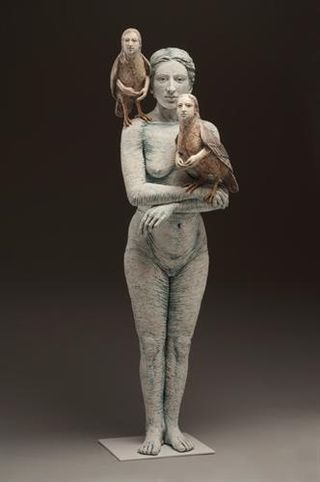 "That
"That
fascination is at least in part an integral part of my character — I was
always the kind of child who was convinced that elves lived in the
parks, that trees were animate, and that holes in floorboards housed
fairies rather than rodents.
"You need to know that my parents, unlike those typically found in
fairy tales — the wicked stepmothers, the fathers who sold off their
own flesh and blood if the need arose — had only the best intentions for
their only child. They wanted me to be well educated, well cared for,
safe — so rather than entrusting me to the public school system, which
has engendered so many ugly urban legends,
they sent me to a private school, where, automatically, I was
outcast for being a latecomer, for being poor, for being unusual.
However, as every cloud does have a silver lining — and every miserable
private institution an excellent library — there was some solace to be
found, between the carved oak cases, surrounded by the well–lined
shelves, among the pages of the heavy antique tomes,
within the realms of fantasy.
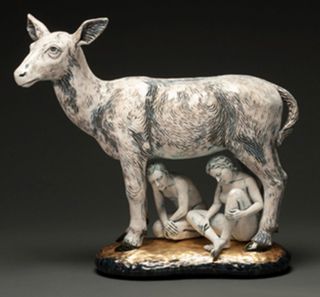 "Libraries and bookshops, and indulgent parents, and myriad books
"Libraries and bookshops, and indulgent parents, and myriad books
housed in a plethora of nooks to hide in when I should have been
attending math classes...or cleaning my room...or doing
homework...provided me with an alternative to a reality I didn't much
like. Ten years ago, you could have seen a number of things in the
literary field that just don't seem to exist
anymore: valuable antique volumes routinely available on library
shelves; privately run bookshops, rather than faceless chains; and one
particular little girl who haunted both the latter two institutions. In
either, you could have seen some variation upon a scene played out so
often that it almost became an archetype:
"A little girl, contorted, with her legs twisted beneath her, shoulders
hunched to bring her long nose closer to the pages that she peruses. Her
eyes are glued to the pages, rapt with interest. Within them, she finds
the kingdoms of Myth. Their borders stand unguarded, and any who would
venture past them are free to stay and occupy themselves as they would."
The exquisite mythic sculpture above and below is by Adrian Arleo, a ceramic artist in Lolo, Montana. "For over fifteen years," says Arleo, "I've been creating sculpture that combines human
and animal imagery in a variety of ways. Some of these works elude to a
relationship of understanding or connection between the human and
animal realms. In others, the human figures possess animal faces, limbs,
or other features in a way that reveals something hidden about the
character or primal nature of the person.
"The Honey Comb sculptures are another variation on blending the human
form with elements from nature. What appeals to me about the quality of
this material is its appearance of simultaneously growing and
deteriorating. I also like the way the wax approximates the material
created by bees, enabling the work to be visual, tactile, and appealing
to the sense of smell, like fresh honeycomb. On the flip side, the work
might suggest the swarming, stinging insects that create this beautiful
material. As with many things in life, beauty and the grotesque can
cohabitate."
To see more of her beautiful work, go here. To read an interview with the artist, go here.
October 21, 2013
Gathering the Worlds
From The Wee Free Men by Terry Pratchett:
"Witches are naturally nosy," said Miss Tick, standing up. "Well, I
must go. I hope we shall meet again. I will give you some free advice,
though."
"Will it cost me anything?"
"What? I just said it was free!" said Miss Tick.
"Yes, but my father said that free advice often turns out to be expensive," said Tiffany.
Miss Tick sniffed. "You could say this advice is priceless," she said. "Are you listening?"
"Yes," said Tiffany.
"Good. Now. . . if you trust in yourself. . . "
"Yes?"
". . . and believe in your dreams. . . "
"Yes?"
". . . and follow your star. . . ," Miss Tick went on.
"Yes?"
" . . . you’ll still be beaten by people who spent their time working hard and learning things and weren’t so lazy. Goodbye.”
''Inspiration usually comes during work rather than before it,'' noted Madeleine L'Engle in her book of essays on writing, Madeleine L'Engle: Herself.
And this is true. Showing up, placing butt in chair, is vital to any art-making process. But balancing work and life commitments is hard; there's no shame in admitting the daily struggle that almost all of us working in the arts face. Ours is work that tends to require large swathes of solitary, uninterrupted time...and that's harder and harder to find in our fast-moving, web-connected, over-scheduled, and over-stimulated modern world.
''I am awfully greedy; I want everything from life," said Simone de Beauvoir. "I want to be a woman and to be a man, to have many friends and to have loneliness, to work much and write good books, to travel and enjoy myself, to be selfish and to be unselfish….You see, it is difficult to get all which I want. And then when I do not succeed I get mad with anger.''
I tend more to frustration than anger, but otherwise I know precisely what de Beauvoir means. I want twenty-four hours more in each day, and nine consecutive lives to live, for I am greedy for life and art as well, with all their occasionally conflicting demands. I want as much time as possible to continue to work hard and learn. I'm greedy for it all.
The enchanting art above is from my old friend Charles Vess. (We've known each other since the 1980s, when both of us lived in New York City.) Charles says: "Reading your knitting post put me in mind of this painting of mine. So just in case you haven't seen the painting, here it is: 'Gathering the Worlds,' a 'Mother' teaches her 'daughter' to knit new worlds from pieces of the old." Gorgeous! Thank you, Charles!
The drawing is "Tinkerbell."
Tunes for a Monday Morning
This week, four songs about work and working people from June Tabor (one of the great solo folk singers of the British Isles) and Maddy Prior (lead singer for the ground-breaking band Steeleye Span), who released two brilliant albums together, back in the day, under the name Silly Sisters. In the videos here, they've reunited for Maddy Prior's 2008 concert at Cecil Sharp House in London.
Above: "The Four Loom Weaver."
According to Mainly Norfolk (which is a very good folk music reference site, by the way), this is "a ballad about the economic crisis of 1819-20 where many handloom
weavers lost their work due to the rise of steam driven weaving machines.
Ewan MacColl learned this song from Mrs. Whitehead, near Oldham,
in Lancashire."
Below: "The Doffing Mistress."
The album notes explain: "The Doffing Mistress oversaw the young factory girls in the spinning sheds
as the changed (doffed) the bobbins, ready to be sent to the weavers.
The revolution in technology brought with it new songs that reflected a
different world from the pastoral songs of an earlier time and have a vibrant
energy and positive outlook in this case, that we do not usually associate
with factories."
Above: "What Will We Do?"
A song that looks at the ways a woman's economic status once depended entirely (except in unusual circumstances) on the kind of marriage she made -- for working class women every bit as much as the gentlewomen whose plight Jane Austen rendered so well. (Alas, the first verse of the song is one that all too many people, men and women alike, can relate to in today's economy.)
Below: "The Grey Funnel Line."
Cyril Tawney, who wrote the song back in 1959, had this to say about it: "This was the last song I wrote before I left the Royal Navy in 1959.
‘The Grey Funnel Line’ is the sailors' nickname for the
Royal Navy—just as if it were another mercantile line. It's a straightforward
song about a sailor leaving home and the loved one. He's extremely fed up with
the Senior Service and he'd rather be outside, but he has to go away yet again.
On occasions like this I think the close of the first day out, as the sun is
setting, is the time when we're most vulnerable to nostalgia. There's a shanty
with the refrain ‘Rock and roll me over for one more day,'
and this gave me the idea for my own refrain
‘It's one more day on The Grey Funnel Line.' "
My apologies for the late post today. It's very stormy this morning, and out here in the countryside that often makes our Internet go wonky. Fingers crossed for better weather as the day and week goes on.
October 17, 2013
The whole thing starts with a single knot
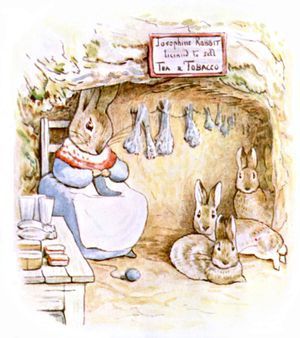 The whole thing starts with a single knot
The whole thing starts with a single knot
and needles. A word and pen. Tie a loop
in nothing. Look at it. Cast on, repeat
the procedure till you have a line
that you can work with.
It’s a pattern made of relation alone,
my patience, my rhythm, till empty bights
create a fabric that can be worn,
if you’re lucky and practised. It’s never
too late
to pick up dropped stitches...
- Gwyneth Lewis
(from "How to Knit a Poem")
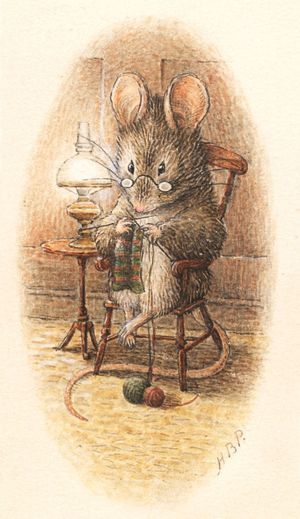 I knit to hold a good yarn
I knit to hold a good yarn
For stories bide with me
On a night like this, by the peat fire;
I like a story with a herringbone twist.
But a yarn aye slips through your fingers.
And my small heart has shrunk with years.
I couldn’t measure the gravits, the gloves, the mittens,
The jerseys, the cuffs, the hose, the caps,
The cowls, the cravats, the cardigans,
The hems and facings over the years.
Beyond the sea wall, the waves unfurl.
I knitted through the wee stitched hours.
I knitted till my eyes filled with tears,
Till the dark sky filled with colour.
Every spare moment. Time was a ball of wool.
I knitted to keep my croft; knitted to save my life.
- Jackie Jay (from "The Knitter")
"Knitting is clothing made in spare moments, or round the fire,
whenever women gathered together... It's something to celebrate -- clothes
made in love and service, something women have always done." - Anne Bartlett (Knitting: A Novel)
"Even when it isn't going well, knitting can be deeply spiritual.
Knitting sets goals that you can meet. Sometimes when I work on
something complicated or difficult -- ripping out my work and starting
over, pouring over tomes of knitting expertise, screeching 'I don't get
it!' while practically weeping with frustration -- my husband looks at me
and says, 'I don't know why you think you like knitting.' I just stare
at him. I don't like knitting. I love knitting. I don't know what could
have possible led him to think that I'm not enjoying myself. The
cursing? The crying? The fourteen sheets of shredded graph paper?
Knitting is like a marriage (I tell him) and you don't just trash the
whole thing because there are bad moments."
- Stephanie Pearl-McPhee (Yarn Harlot: The Secret Life of a Knitter )
" 'No, I was merely reading the Muggle magazines,' said Dumbledore. 'I do love knitting patterns.' " - J.K. Rowling (Harry Potter: Half-Blood Prince)
"I am a writer who does not enjoy writing. I can find innumerable ways
to avoid it. But, to rip off Dorothy Parker, nothing else—nothing—gives
me the same thrill as having written. I’m the same way with
knitting. The process is fine, mind you, and keeps my hands busy. But
nothing else—nothing—gives me the rush that I get from finishing
something.
"The parallels between writing and knitting go even
further. Like writing, knitting has a finite number of raw ingredients.
There are twenty-six letters in the alphabet. Those letters can combine
to give you David Foster Wallace or freshman composition papers. There
are only two basic stitches: the knit and the purl. Those stitches can
add up to a gorgeously complicated sweater or a pastel pink toilet paper
cozy. The difference is in the mind that shapes them."
- Adrienne Martini (Sweater Quest: My Year of Knitting Dangerously)
Images above: "Clotilde" by Louis Paul Dessar (American, 1867-1952); "Josephine Rabbit Knitting" by Beatrix Potter (English, 1866-1943); Knitting Girl and Cat by Albert Anker (Swiss, 1831-1910); "Knitting Mouse" by Beatrix Potter (English, 1866-1943); "Knitting Girl with Toddler" and "Girl Knitting" by Albert Anker (Swiss, 1831-1910); "Interior with Girls Knitting" by Joseph A. Bail (French, 1862-1921); "Woman Knitting Sock Outdoors," a photograph by Gertrude Käsebier (American, 1852-1934); "Knitting" by Harold Knight (English, 1874-1961); A man knits garments for servicemen during World War II, photographer unknown; and "The Sock Knitter" by Grace Cossington Smith (Australian, 1892-1984).
This post is dedicated to Delia Sherman, and all you other mad knitters out there. (There was also a spinning/weaving/sewing post earlier in the autumn: Spinning Straw into Gold). Visit the Poetry Society's website to read about their "Knit a Poem" project, created in 2009 for the society's centenary celebration.
October 16, 2013
Arachne's Handmaidens: Weaving Beauty
As Tilly and I walk through the early morning mist, spiderwebs cling to the brambles and gorse...
...the ephemeral artwork of the spiders...
...the delicate lacework of the bracken fairies.
I'm reminded of the equally ephemeral installations of Chiharu Shiota, a Japanese artist based in Berlin:
Her art is precisely the kind that I love most, evoking Beauty and Mystery...
...and helping us see Beauty and Mystery all around us.
In a poem titled "Mindful,"
Mary Oliver writes:
Every day
I see or hear
something
that more or less
kills me
with delight,
that leaves me
like a needle
in the haystack
of light.
It was what I was born for–
to look, to listen,
to lose myself
inside this soft world
Now I follow my dog through the bracken and the briars, the art of busy spiders gleaming all along the path.
Indeed, this is what we're born for, to look, to listen. And to find magic everywhere.

Terri Windling's Blog
- Terri Windling's profile
- 708 followers




